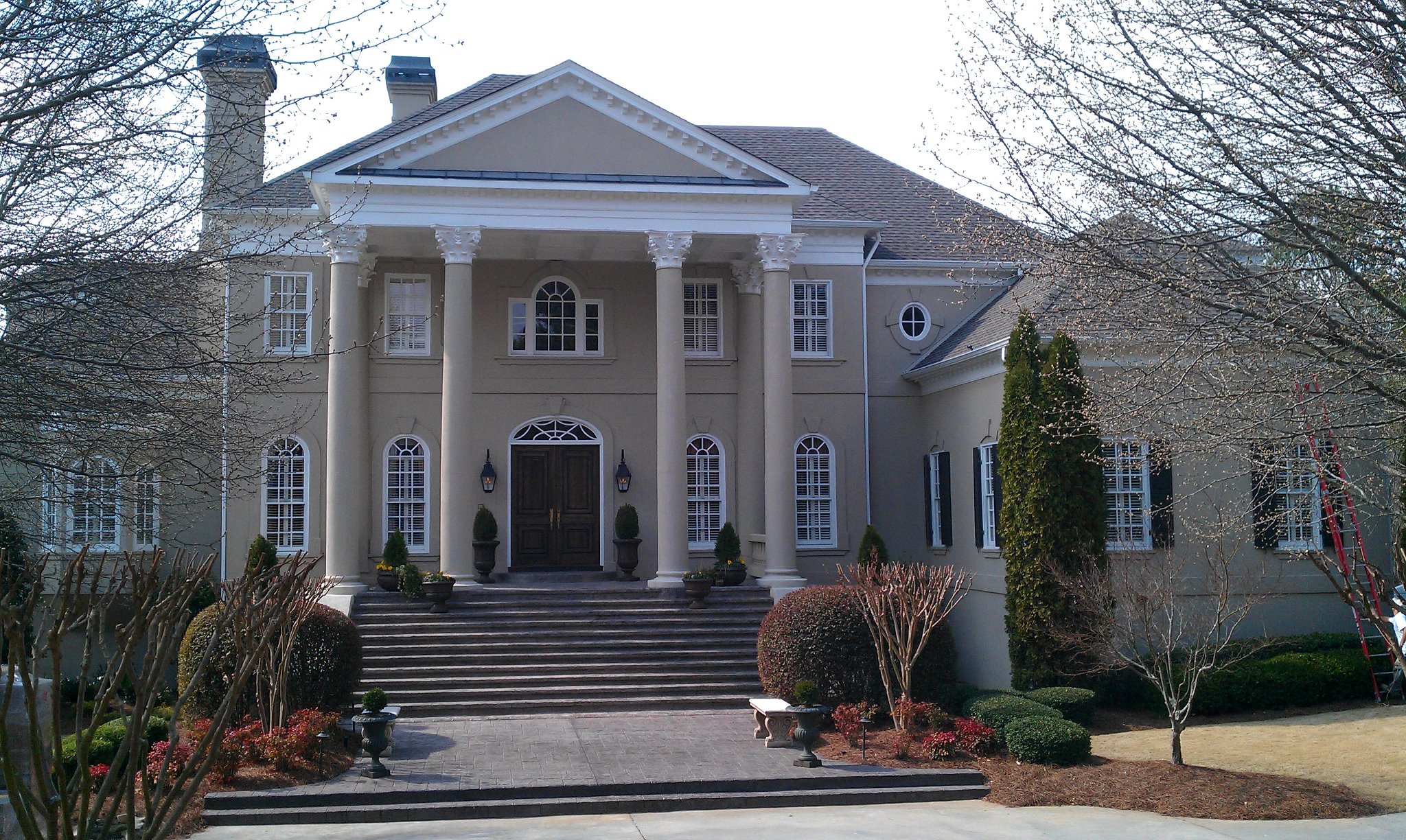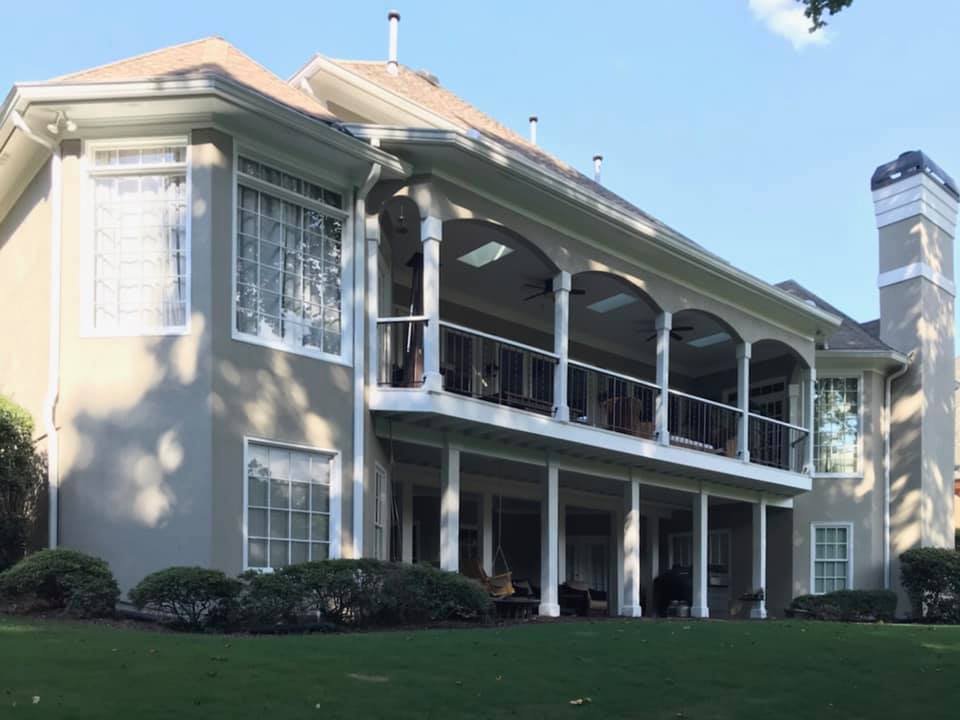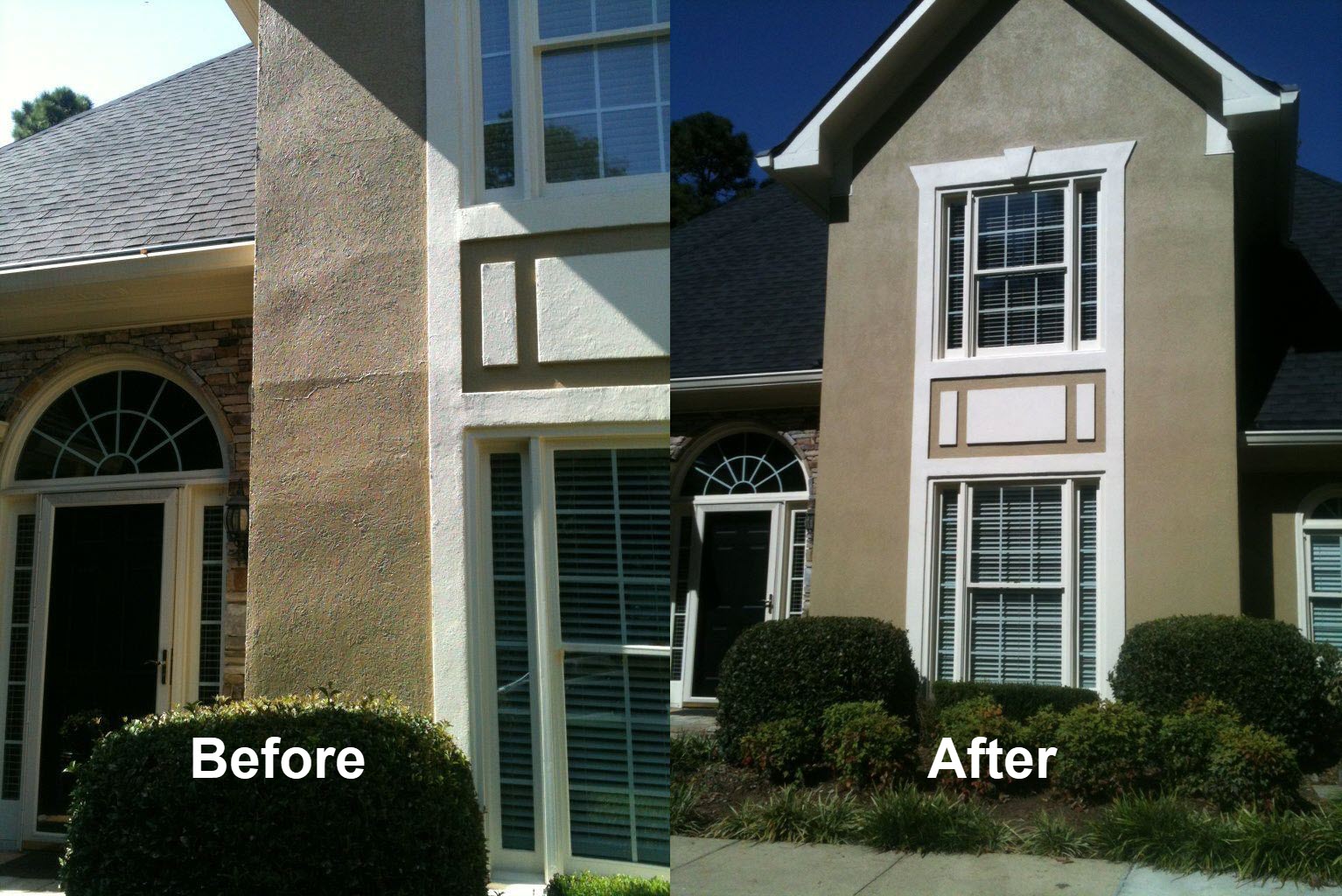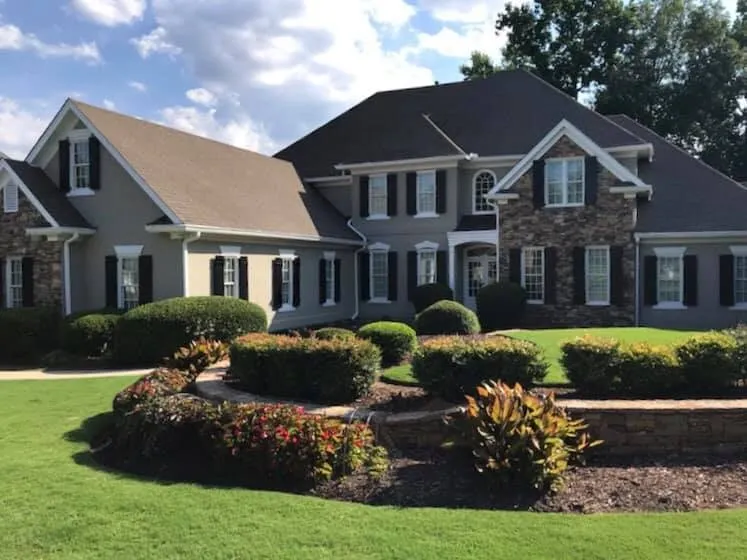Stucco Foam Trimin Ball Ground GA
Stucco Foam Trim for Stylish and Functional Designs
We Are Locally Owned & Operated For Over 24 Years
We Serve Businesses In And Around The Following Cities:
About Stucco Foam Trims in Ball Ground, Georgia
Advanced Stucco Repair: Mastering Stucco Foam Trim for Ball Ground, Georgia
The Significance of Stucco Foam Trim in Modern Construction
Amidst the verdant landscapes and burgeoning development options, Ball Ground, Georgia, emerges as an epicenter for architectural evolution that gracefully blends traditional aesthetics with contemporary requirements. At the heart of this evolution is the use of stucco foam trim, a seemingly modest element that can significantly impact both visual appeal and functional detailing of a structure. For homeowners and businesses in Ball Ground, the choice of a reliable service provider like Advanced Stucco Repair can make all the difference, achieving superb results in stucco, EIFS, and Dryvit installations.
Stucco foam trim serves as both an aesthetic accent and a functional component in residential and commercial buildings. This dexterous trim offers a plethora of options for creative design while also enhancing the structural integrity of stucco installations. Its application around windows, doors, and along architectural lines not only elevates the look of a property but also adds to its value, longevity, and efficiency. Indeed, when considering construction or renovation projects in this thriving Georgia city, understanding the breadth of stucco foam trim’s benefits becomes essential, leveraging both its protective and decorative capabilities to the fullest.
Understanding the Process of Installing Stucco Foam Trim
Whether constructing a new home or refurbishing a commercial building, the effective installation of stucco foam trim is a critical step towards ensuring both aesthetic appeal and operational efficiency. This process, while intricate, is facilitated by expert hands at Advanced Stucco Repair, who adhere to best practices to achieve enduring results.
Initial steps involve thorough surface preparation. Before applying the trim, the substrate must be clean and primed to ensure proper adhesion. A primer specifically made for stucco or EIFS systems is generally applied, creating a seamless base for the foam trim to bond. Selecting the right foam trim is crucial too, as it must meet both aesthetic expectations and architectural requirements. Thanks to advancements in materials, modern stucco window trim and exterior foam trim can be easily customized to fit various design intents, from classical to ultramodern styles.
Once the specifics of trim style and size are determined, application proceeds with meticulous alignment and placement. This ensures uniformity and precision, critical in achieving the intended architectural lines. Should intricate trims or designs be necessary, careful shaping is performed with tools designed to integrate with stucco surfaces. Finally, the selected trim pieces are securely affixed to the prepared surface using specialized adhesive compounds tailored to humid climates synonymous with Ball Ground, Georgia. Additional layers of protective coatings might be applied to increase durability and weather resilience.
Advantages of Utilizing Stucco Foam Trim
In the realm of exterior design, stucco foam trim stands as a versatile element capable of transforming mundane facades into remarkable architectural statements. For property owners in Ball Ground, the appeal of this material extends beyond sheer aesthetics, presenting a spectrum of benefits that cater to both practical and creative endeavors.
One of the foremost advantages of stucco foam trim is its lightweight nature. Unlike traditional masonry or stone trims that can weigh down structures and require extensive reinforcements, foam trims offer a lightweight alternative that doesn't compromise on durability or strength. This vitality in design contributes to reduced labor costs and eases the installation burden, drawing the attention of architects and builders wishing for profitable yet assured project completion.
Beyond its physical properties, stucco foam trim enhances energy efficiency. By providing an additional layer of insulation, it contributes to reducing heat loss and mitigating the impact of external temperature fluctuations on indoor environments. When installed professionally by specialists like Advanced Stucco Repair, property owners can take pride in possessing a building that maximizes energy performance.
Durability is non-negotiable in exterior applications, and stucco foam trim excels in this regard. Engineered to withstand elements, including wind, rain, and temperature extremes typical to Ball Ground’s climate, it defies wear, maintaining its appearance and performance for years. Moreover, the material’s inherent flexibility prevents cracking and damage often seen in more rigid alternatives, ensuring beauty and integrity over time.
Real-World Applications in Residential and Commercial Settings
The aesthetic versatility of stucco foam trim is well-documented across numerous case studies and projects carried out by Advanced Stucco Repair in Ball Ground. Residential properties that integrate the material see dramatic enhancements in curb appeal, with the ability to fashion stucco window trim or ornate moldings that add elegance and a signature style to homes.
Within commercial settings, the material plays an equally pivotal role. Office buildings and retail spaces benefit from the sophisticated presence stucco foam trim offers. Notably, the application isn’t confined to exterior use. Many properties incorporate trim stucco elements within interior spaces, forging a consistent design theme throughout a building. Impressive height lines and window details offer tenants and businesses not only a functional workplace but an environment that is visually enriching. By choosing Advanced Stucco Repair, businesses are assured a strategic partner in harnessing these benefits, ensuring each detail aligns with the enterprise’s unique vision.
The Art and Precision of Stucco Foam Trim in Renovations
Renovation projects present both challenges and opportunities, especially when seeking to preserve historic integrity while embracing modern practicality. For many structures in Ball Ground, stucco foam trim serves as the ideal integration of these dual objectives. Advanced Stucco Repair excels in adapting and applying these sophisticated trims in refurbishments, seamlessly blending existing architectures with contemporary enhancements.
Precision is paramount when working with historical buildings, where structural nuances and stylistic elements must be preserved. Competent professionals approach these scenarios by meticulously sculpting trim pieces to fit exact specifications, ensuring that every curve and line respects the building’s legacy while offering refreshed elegance and functionality.
Homeowners often discover a superior comfort balance in interiors post-renovation, as exterior stucco trim augments windows with improved insulation and soundproofing benefits. Business establishments undergoing renovations leverage updated trims to modernize their facades, ensuring both clients and employees engage in a sophisticated, cutting-edge environment.
Seamless Integration with EIFS and Dryvit Systems
EIFS (Exterior Insulation and Finish Systems) and Dryvit systems utilize complex layering techniques that benefit greatly from the incorporation of stucco foam trim. These integrated systems optimize energy use and provide significant moisture resistance, making them preferred choices for both residential and commercial properties in Ball Ground.
Foam trim for stucco is indispensable within these setups, enhancing not only the energy-efficient ethos the systems are built upon but also their decorative splendor. The typical insulation and finishing layers are complemented by the aesthetic finesse of foam trims, transforming EIFS and Dryvit systems from mere functional solutions to architectural marvels.
Thus, when businesses or homeowners engage Advanced Stucco Repair for EIFS or Dryvit installations, they achieve more than technical efficiency; they gain an aesthetically appealing exterior that elevates their property’s market value. The foam trim acts as a harmonious extension of the surface, crafted for both maximal performance and stunning looks.
Why Advanced Stucco Repair Stands Out in Ball Ground, Georgia
In a region as dynamic as Ball Ground, Georgia, the decision to partner with a reputable company like Advanced Stucco Repair yields numerous benefits. Their expertise in stucco foam trim installation and repair is managed by a team of skilled professionals who bring knowledge, authenticity, and attention to detail into every project.
Advanced Stucco Repair’s reputation is founded on a commitment to excellence and customer satisfaction. They provide tailored services that cater to the unique architectural demands of each project, whether modern homes or esteemed commercial infringements down Main Street. This versatility, coupled with their innovative approach to stucco applications, allows them to offer unmatched results that resonate with Ball Ground’s traditional and contemporary aesthetics.
Furthermore, Advanced Stucco Repair understands the microclimate nuances of North Georgia, applying local knowledge to guarantee that every stucco, EIFS, or Dryvit installation withstands the test of time. It is this dedication, combined with a diverse portfolio and agility in service delivery, that distinguishes Advanced Stucco Repair as a trusted partner in a city known for its picturesque qualities and growing aspirations.
When considering stucco foam trim, it becomes clear that the advantages extend beyond ornamentation to encompass efficiency, durability, and adaptability. Leveraging the capabilities of Advanced Stucco Repair ensures these benefits are realized to their fullest, crafting structures that are not only practical and resilient but visually compelling and lasting enviable legacies throughout Ball Ground, Georgia.
Stucco Foam Trims Gallery



Call Us Today to receive your Free Quote for
Stucco Foam Trim in Ball Ground
Serving: Ball Ground, Georgia

About Ball Ground, Georgia
The area that encompasses Ball Ground was originally inhabited by both the Cherokee and the Muscogee Creek, until the Battle of Taliwa, which took place in what later became Ball Ground in 1755, between the Cherokee and the Muscogee Creek, ending with a Cherokee victory and forcing the Creek out of the territory.
Following the passing of the Indian Removal Act in 1830, the Cherokee were slowly relocated out of Cherokee County, including the Ball Ground area. The area of Ball Ground and the surrounding Cherokee County was distributed to European-Americans via the 1832 Georgia Land Lotteries, though the lands were not settled by them until the 1835 Treaty of New Echota caused the Cherokee to fully leave North Georgia and relocate west of the Mississippi River as part of the Cherokee removal out of North Georgia.
The name Ball Ground was initially given by settlers to refer to an area of land, not for the town or community. Native Americans would use the area as a ballground to play a game similar to town ball, and settlers named the town Ball Ground in reference to this. Over time details were added to the story of why the town was named Ball Ground. One such story was that the site was so named because it was the location of a 1532 game of ball between Native Americans playing against Hernando de Soto and his men, in a game umpired by the owner of the Fountain of Youth. When a fight broke out during the game, the umpire was killed, taking the secret of the location of the Fountain of Youth with him. Another story attested as "local folklore" by the Cherokee County Chamber of Commerce says that the site is named Ball Ground because of a game of stickball played between the Cherokee and Creek "for the prize of a thousand square miles of land".
After acquisition from the Cherokee in the 1830s, Ball Ground was originally settled as farmland and had few people living in the area. By 1847, the Ball Ground area had a post office, which was one of ten post offices within Cherokee County. In 1882, just before the town was established, Ball Ground had six homes and two country stores.
Meetings were held in 1875 in various areas including Ball Ground to discuss the possibility of a railroad being built through Ball Ground and other nearby areas. In 1881 work began on a railroad to Ball Ground using chain gangs for labor and grading on the railroad's path was completed in Ball Ground that same year. The resulting track was part of the Marietta and North Georgia Railroad and was completed in 1882. Upon completion the terminus of the railroad was the newly constructed depot in Ball Ground.
A town was built around the Ball Ground depot using surrounding land that was donated by thirteen nearby landowners for the express purpose of establishing a town. The deed of transfer to the railroad company noted that “The consideration moving each of us in the establishing of this town is the enhanced value to our lands within and adjacent to the said town, and the general benefit to the country, by which we shall be benefited.” The donated land was split into 200 lots and sold via an auction held in Ball Ground on April 18, 1883, along with other additional properties including a 65 acres (26 ha; 0.102 sq mi) farm and a nearby mill. The next year in 1884, the town had approximately 300 residents.
Ball Ground was incorporated as a town by town charter on September 27, 1883, by an act of the Georgia General Assembly. The town limits were set as "one half mile in every direction from the present railroad crossing on the Gilmer Ferry road; that it shall be known and distinguished as the town of Ball Ground."
In January 1896 a judge approved the sale of the Marietta and North Georgia railroad to the Atlanta, Knoxville, and Northern railway due to nonpayment of loans by the former railroad. The property to be sold included the depots along the railroad route which included the Ball Ground depot. The plaintiffs in the case were those owed money by the railroad and gave loans that were taken out to charter the railroad, but the scheduled April 1896 sale of the railroad was subsequently delayed through the courts by order of the same judge that initially approved the sale. That same month the Marietta and North Georgia railroad missed their payment deadline and the sale moved forward. On November 1, 1896, the Marietta and North Georgia Railroad was purchased by and turned over to the Atlanta, Knoxville, and Northern railway. Atlanta, Knoxville, and Northern was sold to the Louisville and Nashville Railroad in 1902.
An amendment to the town's charter was passed in 1903 to change the election times, clarifying the issuance of liquor licenses and set a price for said license at "not less than $500". The amendment also clarified how ad valorem taxes were to be collected. A further amendment in 1905 changed the 1903 amendment's $500 liquor license fee to $5,000. An updated charter passed by an act of the Georgia General Assembly in 1911 greatly expanded the powers of the municipal government, including the ability to pass municipal ordinances, and established a school district within Ball Ground.
In 1961 a Ball Ground Improvement Association was formed to add improvements to the city including new paint, a city park, and street lights.
A television documentary aired in December 1971 on North Georgia's Channel 11 that focused on the city of Ball Ground and described it as a city in decline, and interviewed Ball Grounders about "the slow deterioration of the town." Two weeks after the broadcast of the documentary, the city's merchants announced that they had organized the Ball Ground Merchants Association to promote trade and to function as a Chamber of Commerce for the city.
The Ball Ground Community Association was formed in early 1972 to promote the town and to organize festivals and cultural events. The first event the association organized was the May 1972 spring festival and parade, which included a delegation from the Cherokee Nation. This marked the first time the Cherokee returned to the area in any official capacity since they were removed from the area during the 1830s. As part of the festival, two Cherokee teams played a game of stickball against one another, and then-Lieutenant Governor Lester Maddox served as the parade's grand marshal. Later that year in November 1972, in part because of the festival and other improvements to the city, Ball Ground won the "1972 Stay & See Georgia" contest, which was a program designed to help highlight and expand tourism within the State of Georgia. The spring festival was held annually until 1989.
In 1997 developers began building new homes and communities within Ball Ground. Because of the growth of the city, residents and city officials began discussing the need for an improved sewer system to help modernize the septic systems of older homes and to attract new growth for the city.
In 1998 a plan was put in place to begin work on a $2.8 million sewage system. The sewage system was completed in Fall 2003 amid ongoing development in and around Ball Ground.
Ball Ground is located at the foothills of the North Georgia mountains in the northeastern portion of Cherokee County. The city is 4.7 mi (7.6 km) northeast of the city of Canton and 0.4 mi (0.64 km) south of Nelson. It is the northernmost city in Cherokee County that is fully within the county limits, as the city of Nelson is partially within Pickens County. Ball Ground is 37.9 mi (61 km) north of Georgia's capital city of Atlanta's northernmost city limits and 48.7 mi (78 km) from downtown Atlanta.
Ball Ground lies within the Upper Piedmont Physiographic Province in a narrow band of land called the Hightower-Jasper Ridge District, which has a different land structure and lithology than the surrounding areas. The bedrock underneath the city consists of igneous and metamorphic rocks such as gneiss and schist. The land in and around Ball Ground is rich in marble deposits as well as talc, pyrite, and gold.
According to the United States Census Bureau as of 2020, Ball Ground has a total area of 6.3 sq mi (16 km), of which 0.04 sq mi (0.10 km), or 0.63%, is water. The city's elevation averages around 1,100 ft (340 m) above sea level, ranging from just over 1,000 ft (300 m) in the valleys to around 1,200 ft (370 m) on several hilltops within the city. Unlike most other parts of Cherokee County, Ball Ground is not in a floodplain and has no typically flood prone areas. To protect the water and surrounding lands, the city government has ordinances in place for stream buffer protection, watershed protection, and wetland protection.
The climate of Ball Ground, as with most of the southeastern United States, is humid subtropical (Cfa) according to the Köppen classification, with four seasons including hot, humid summers and cool winters. July and August are generally the warmest months of the year with an average high of around 85 °F (29 °C). The coldest month is January which has an average high of around 48 °F (9 °C).
Ball Ground receives rainfall distributed fairly evenly throughout the year as typical of southeastern U.S. cities, with March on average having the highest average precipitation at 5.15 in (131 mm), and May typically being the driest month with 3.81 in (97 mm).
| Census | Pop. | Note | %± |
|---|---|---|---|
| 1890 | 296 | — | |
| 1900 | 302 | 2.0% | |
| 1910 | 443 | 46.7% | |
| 1920 | 809 | 82.6% | |
| 1930 | 706 | −12.7% | |
| 1940 | 711 | 0.7% | |
| 1950 | 700 | −1.5% | |
| 1960 | 707 | 1.0% | |
| 1970 | 617 | −12.7% | |
| 1980 | 640 | 3.7% | |
| 1990 | 905 | 41.4% | |
| 2000 | 730 | −19.3% | |
| 2010 | 1,433 | 96.3% | |
| 2020 | 2,560 | 78.6% | |
| 2023 (est.) | 3,039 | 18.7% | |
| U.S. Decennial Census | |||
The results of the 2000 United States census showed that Ball Ground had shrunk in population in the previous ten years, going from a population of 905 in 1990 to 730 in 2000. After the improvements to the sewage infrastructure and the development of homes and businesses in and around Ball Ground in the 2000s, the city began to see large amounts of growth. During the 2010 census the population had grown 96.3% to 1,433, and in 2020 had grown an additional 78.6% to 2,560.
As of the 2020 United States census, there were 2,560 people, 838 households, and 626 families residing in the city. The population density was 406.3/sq mi (156.9/km).
According to the 2020 American Community Survey, there were 838 households, out of which 33.8% had children under the age of 18 living with them, 67.1% were married couples living together, 1.2% had a male householder with no spouse present, 7% had a female householder with no spouse present, and 24.7% were non-families. 17.8% of all households were made up of individuals, and 3.6% had someone living alone who was 65 years of age or older. The average household size was 2.66 and the average family size was 3.03.
In the city, the population was spread out, with 22.7% under the age of 18, 6.8% from 18 to 24, 27.3% from 25 to 44, 32.2% from 45 to 64, and 11.1% who were 65 years of age or older. The median age was 38.4 years. For every 100 females, there were 108.4 males. For every 100 females age 18 and over, there were 110 males.
The median income for a household in the city was $81,900, and the median income for a family was $92,690. Males had a median income of $51,393 versus $40,893 for females. The per capita income for the city was $18,147. About 4% of the population was below the poverty line, including 6.2% of those under age 18 and 0.8% of those age 65 or over.
| Race | Num. | Perc. |
|---|---|---|
| White (non-Hispanic) | 2,300 | 89.84% |
| Black or African American (non-Hispanic) | 21 | 0.82% |
| Native American | 7 | 0.27% |
| Asian | 6 | 0.23% |
| Other/Mixed | 104 | 4.06% |
| Hispanic or Latino | 122 | 4.77% |
Since the incorporation of the town in 1883, the city has been managed by a mayor and city council consisting of five council-members, which meet on the second Thursday of each month. The city government also consists of a city clerk, city attorney, and a city manager.
The city has a municipal court which is held on the third Friday of each month. With the exception of a small police department managed by the city, most services are provided by Cherokee County, including animal control, building inspections, planning and zoning, parks and recreation, and jail operations. Cherokee County Fire Department is responsible for fire protection in Ball Ground, and Cherokee County Fire Station #2 is located in Ball Ground.
In the United States House of Representatives, Ball Ground is split between Georgia's 9th congressional district and Georgia's 11th congressional district. For representation in the state government, Ball Ground is part of the Georgia State Senate's 21st district, and the 22nd district for the Georgia House of Representatives.
Public education for students in Ball Ground is administrated by the Cherokee County School District and students within the city attend Ball Ground Elementary School, Creekland Middle School, and Creekview High School. High School students in Ball Ground also have the option of attending Mountain Education Charter High School (MECHS), an alternative school program that offers evening classes for obtaining a high school diploma. While MECHS has eighteen campuses throughout the North Georgia area, the Cherokee County classes of MECHS are held at the Etowah High School campus in Woodstock, Georgia.
TLE Christian Academy at Gospel Outreach Inc is the only private school in Ball Ground and is a private K-12 school with a 2021 enrollment of 30 students.
The nearest college or university to Ball Ground is Reinhardt University in Waleska, Georgia in Cherokee County, 12.1 mi (19.5 km) from Ball Ground.
